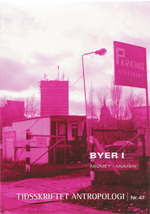HANOI
DOI:
https://doi.org/10.7146/ta.v0i47.107109Resumé
The article discusses the role that cities
play in constructing and mediating
particular historical accounts. Drawing on
fieldwork experiences from Hanoi and
Kathmandu it adopts a comparative
perspective and explores how history is
mediated, experienced and interpreted
through the physical organisation of the
city. History is conceptualised both chronologically
as sequences of events that can
be traced in the physical environment of
the city and as a temporally specific
narrative about the city and the wider
society of which it is part. The article
throws light on the impact different
political regimes have had on the built
environment and how this has informed
the social organisation and human use of
urban space in Hanoi. Comparing this
with the social and physical organisation
of Kathmandu two particular issues
become salient, firstly the way in which
the influence of foreign powers is physically
manifest in the city; secondly how
specific places, as national symbols of
unity, frame everyday activities in the city.
Downloads
Publiceret
Citation/Eksport
Nummer
Sektion
Licens
Ophavsretten til artiklerne i Tidsskriftet Antropologi tilfalder forfatteren.
Artikler publiceret i Tidsskriftet Antropologi må citeres, downloades og videresendes for ikke-kommerciel brug, under forudsætning af normal akademisk reference til forfatter(e) samt tidsskrift, årgang, nummer og sider. Artiklerne må kun genudgives med eksplicit tilladelse fra forfatter(e) og tidsskriftet.


